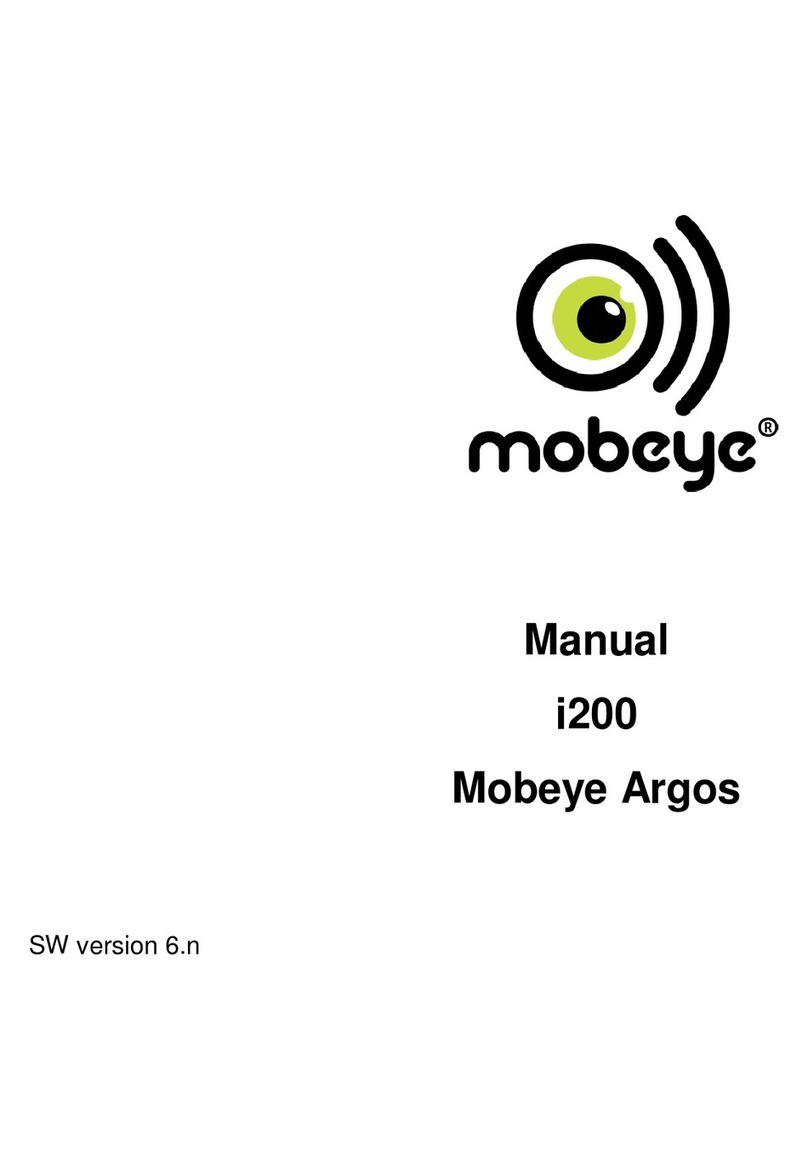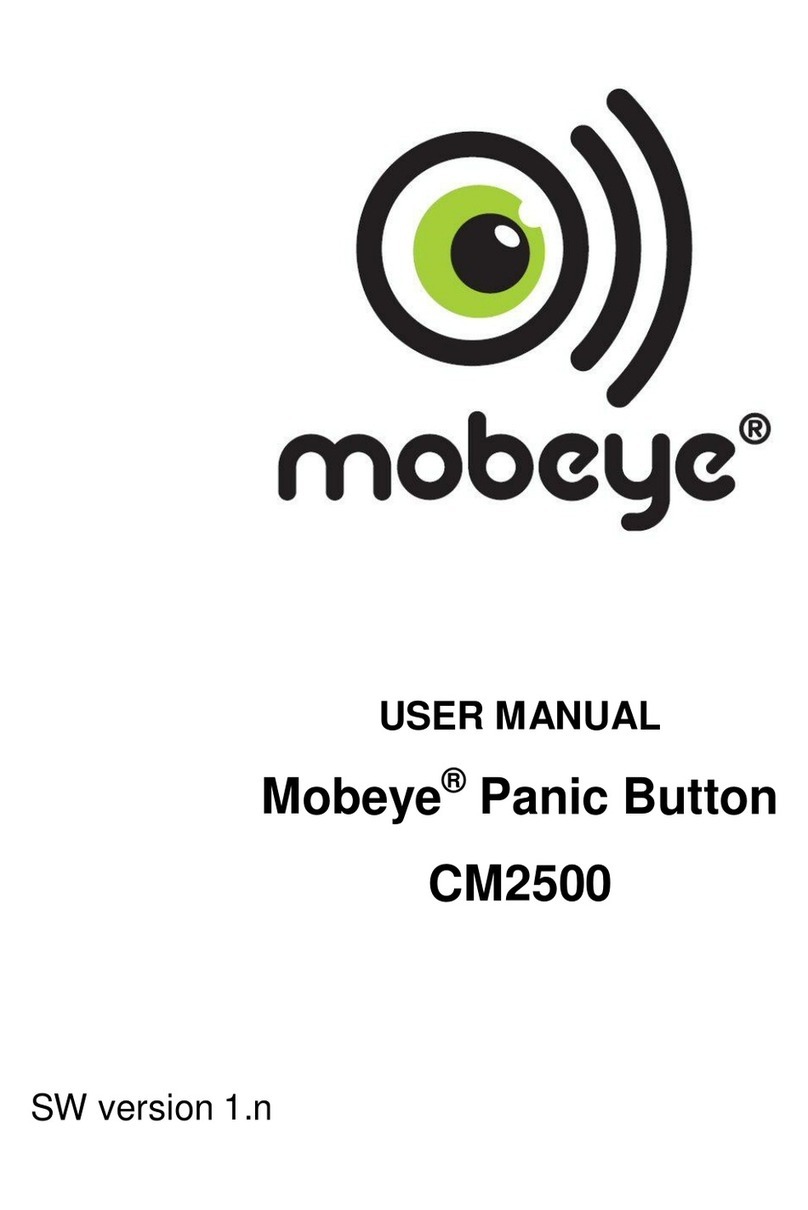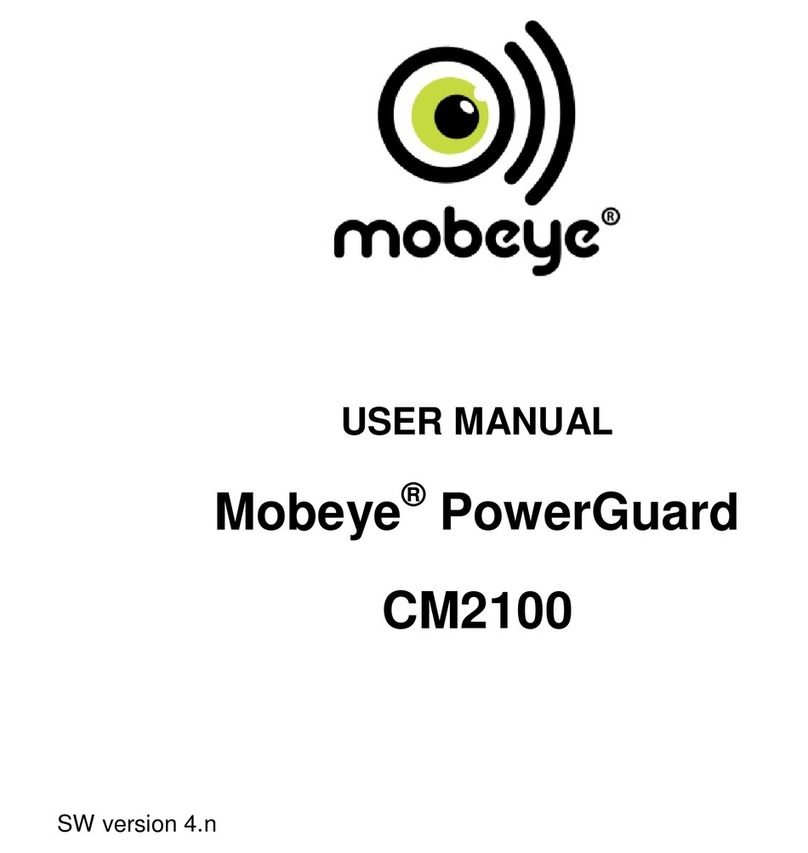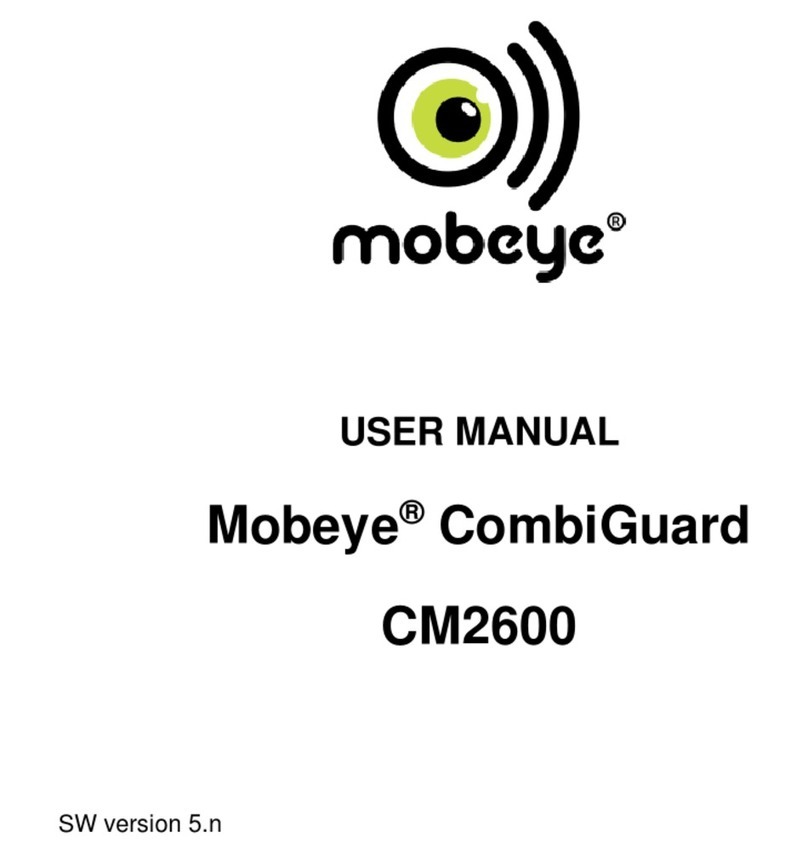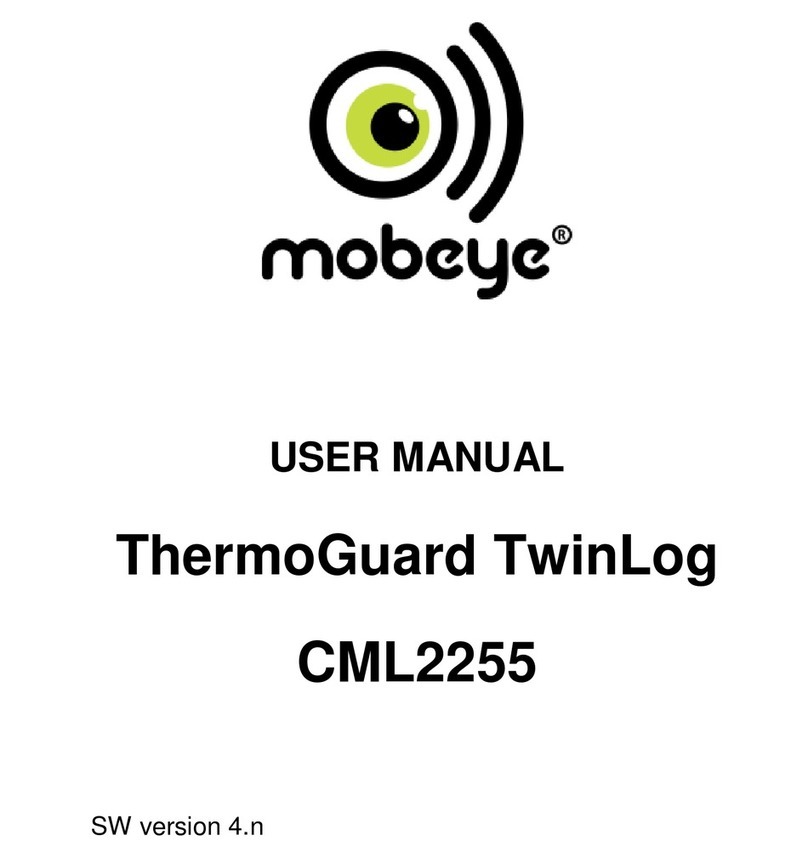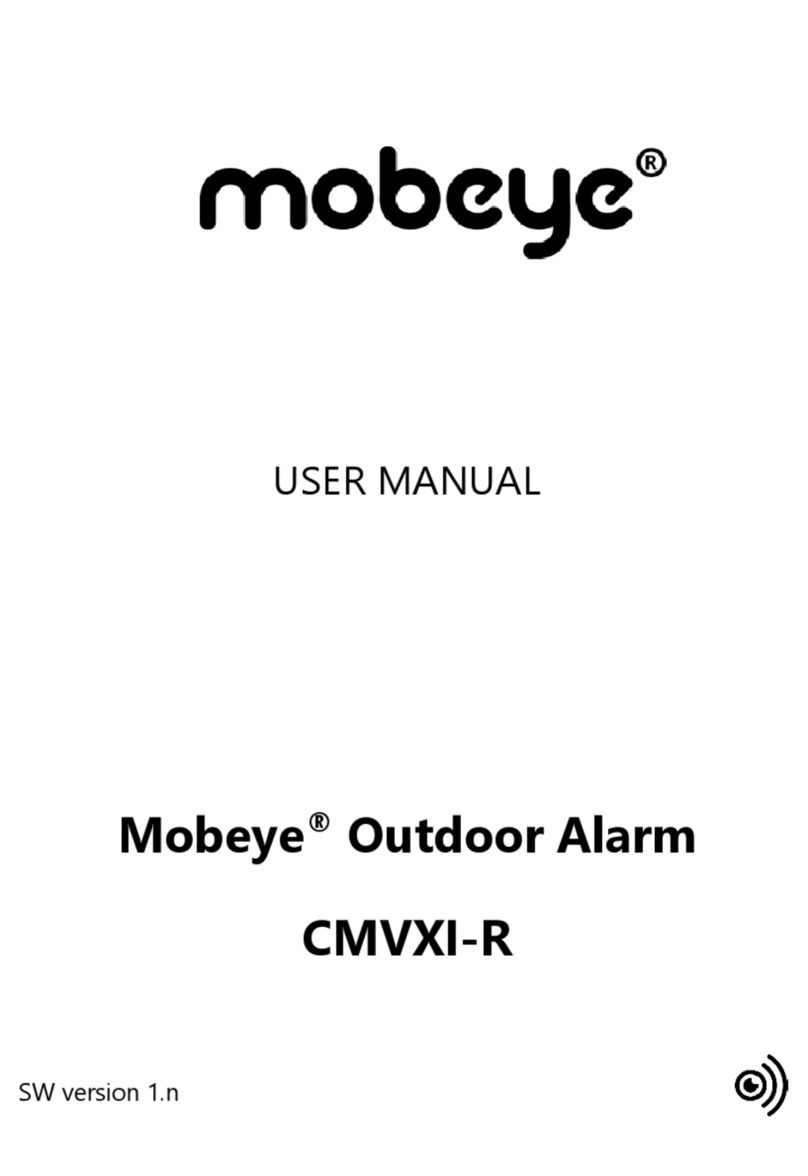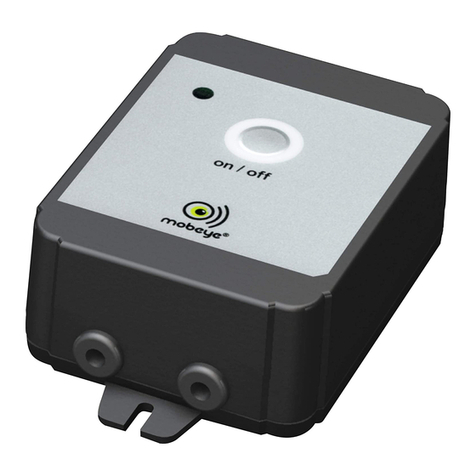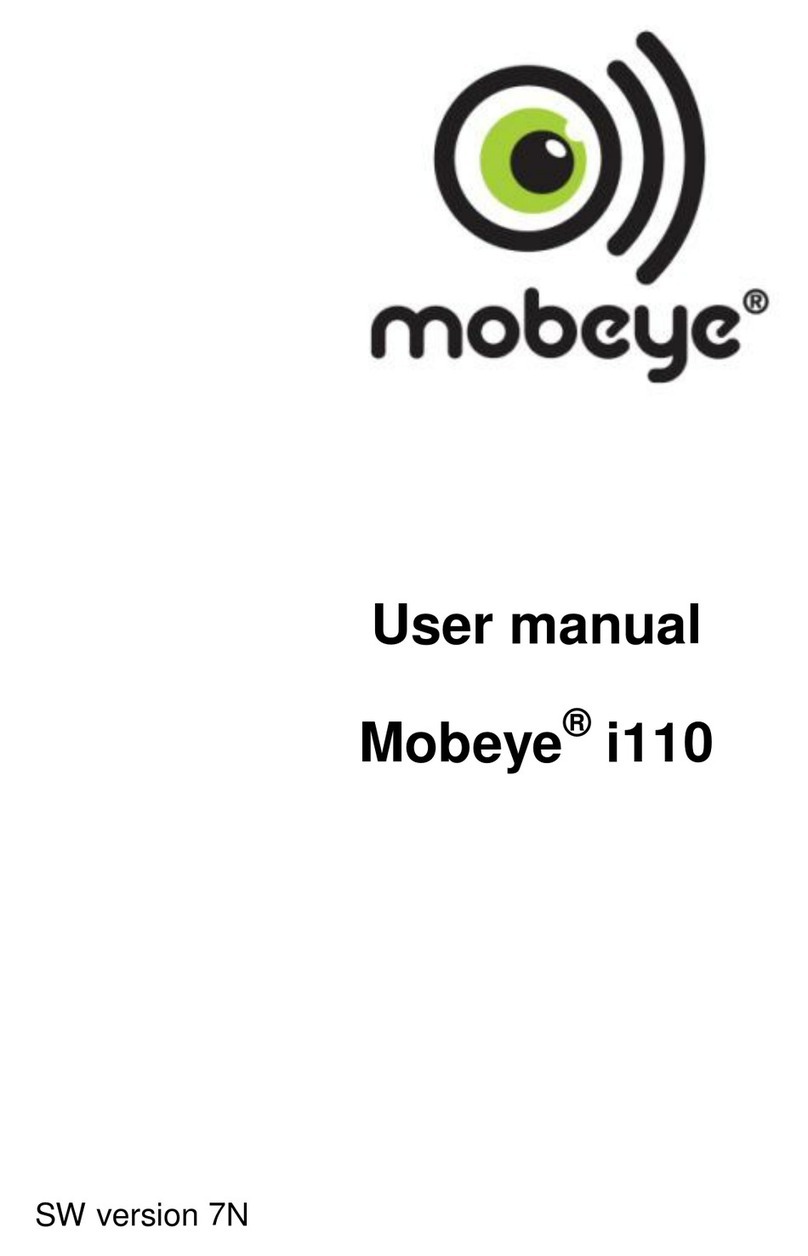5
1. GENERAL DESCRIPTION
The Mobeye ThermoGuard is a battery operated GSM module used to send an alarm
notification after the temperature gets out-of-range, a triggered input or - if an external
power supply is used- after a power failure.
The factory settings of the Mobeye ThermoGuard cause following reactions:
- In the situation of a temperature alarm, the Mobeye ThermoGuard sends an alarm SMS
text message and calls the phone numbers programmed in by the user. The SMS
message contains the text ‘Temperature too high’ or ‘Temperature too low’, followed by
the measured temperature.
- As soon as the temperature gets back to a value inside the range, an SMS text message
is sent to the phone numbers programmed in by the user containing the text
‘Temperature OK’.
- When one of the inputs is activated by a sensor, the Mobeye ThermoGuard sends an
alarm SMS text message and calls the phone numbers programmed in by the user.
- When the temperature sensor is removed, the Mobeye ThermoGuard sends an SMS
text message to the administrator (first telephone number) containing the text
‘Temperature sensor not connected’.
- When the batteries need to be replaced, the Mobeye ThermoGuard sends a ‘battery low’
SMS text message to the administrator.
- When an external power supply is used and a power failure occurs, the Mobeye
ThermoGuard sends a ‘power failure’ SMS text message and calls the phone numbers
programmed in by the user.
- When the power is restored, the Mobeye ThermoGuard sends a ‘power restored’ SMS
text message to the phone numbers programmed in by the user.
The Mobeye ThermoGuard has many options to influence the behaviour, which are
described in chapter 5. For additional alarm and monitoring functions the Mobeye
ThermoGuard can be connected to the Mobeye Internet Portal, which is explained in
chapter 8.
